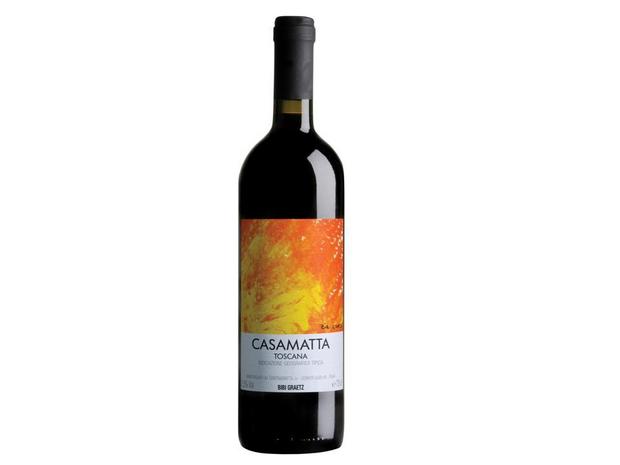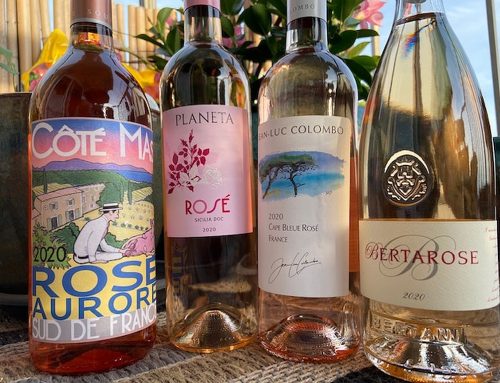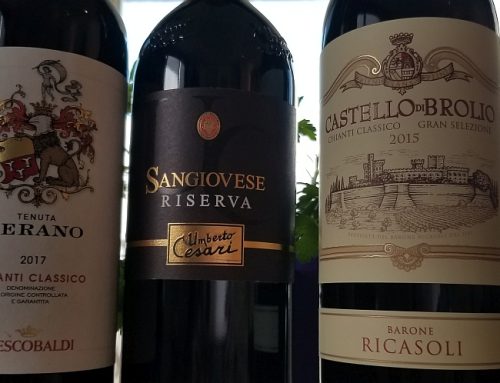La Vieille Ferme is like the well-dressed and best-mannered youngest child of a noble family. Everyone focuses on the ranking and powerful member Chateau de Beaucastel, one of the great Chateauneuf-du-Pape wines, with little attention to the breeding of La Vieille Ferme.
The Perrin family, which owns Chateau de Beaucastel, created La Vieille Ferme in 1970. It is made from four grapes used in their Chateauneuf-du-Pape’s blend: grenache, syrah, carignan and cinsault. Each grape’s percentage depends on what nature delivers that year from hillside vineyards on Mont Ventoux. And the winemaking is straightforward, too: After fermentation, the wine is aged for 10 months in vats and barrels, then bottled.
The goal is to create an eye-appealing, sensually pleasing, ripe red fruit wine that is enjoyable the moment you pour it into a glass, and the 2012 La Vieille Ferme Ventoux Rouge fits the bill. It is carmine red with pungent black pepper, herbs and black cherry scents. Its medium body delivers a basketful of black fruit flavor spiced with a black pepper taste and lively tannins.
The consistent quality and very reasonable price of La Vieille Ferme makes it a regular wine-by-the-glass choice of restaurants throughout France and America. You can make it your house wine, too.
Serve it with grilled hamburgers or chicken and watch how your guests pour a second glass of it with an approving smile. Your smile will be knowing, too, thanks to its price: about $9.
One of the pleasures of the wine world is the diversity of talented people who populate it. Take Bibi Graetz. The son of a Norwegian and Israeli, Graetz was raised in Castello di Vincigliata, a medieval castle that his parents purchased in Fiesole, a village outside of Florence, Italy.
In the 1950s, Graetz’s father studied at the Accademia delle Belle Arte in Florence, eventually becoming an internationally known sculptor. Graetz followed those footsteps and graduated from the Accademia; he was pursuing an artistic career when his interest in wine overtook his passion for painting.
In 2000, Graetz, assisted by winemaker Alberto Antonini, made his first wine from grapes grown in the vineyards surrounding the family castle. Today, he makes a range of wines only from Tuscany’s indigenous grapes.
Casamatta, which translates to crazy house, is Graetz’s Tuscan house wine. It is pure sangiovese, made from purchased grapes of 10-year old vines in central and southern Tuscany, fermented and aged in stainless tanks.
The current vintage is the 2011 Bibi Graetz Casamatta Rosso. Its eye-catching cardinal red hue and intense black cherry aroma and flavor was much more than I expected from a pure sangiovese wine cloistered in stainless steel tanks. It sent a message that Graetz’s vineyard management and grape selection is much stricter than anyone else I know making a basic Tuscan red wine.
The Casamatta label that Graetz created is bursting with yellow and orange colors, showing that Graetz’s artistic talent begins in the vineyards and goes all the way to the label.
At $10 dollars, you’ll start enjoying the 2011 Bibi Graetz Casamatta Rosso at the checkout counter. Then pair it with grilled steaks, or your favorite pasta with a meat sauce. That’s an art form, too.








Leave A Comment